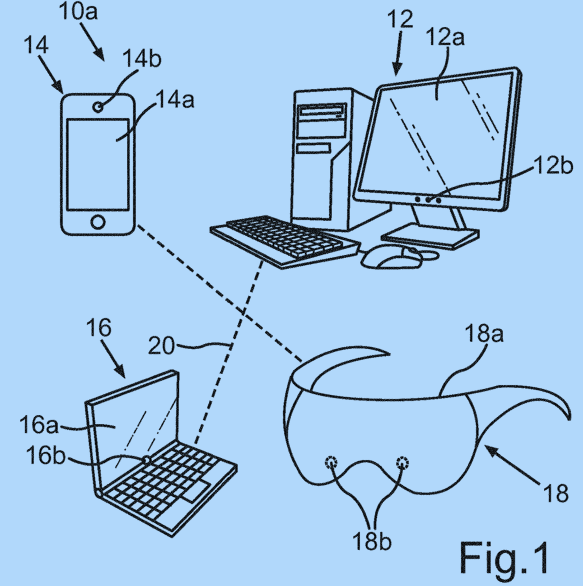Having a meeting online without geographic restraints is impressive. Many of the software like Skype and WebEx are already offering a similar experience via smartphone, tablet and laptops. However, having a one-stop-solution with smart glasses which would let you start a conversation virtually from anywhere just by wearing smartglasses would be fabulous. Happily, that is not a distant dream anymore.
Apple has registered a patent about a new bionic technology which would let you communicate with anyone via a virtual meeting room. The diagrams in the patent registration hint that the device would look like sports glasses with capability to track your eyes and by using cameras on both the lenses. The MR glasses would connect to a virtual meeting space.
What is so exciting?
The new invention would offer a communication system to have a one-on-one virtual meeting, wherein the communication system would have at least two attendees and can incorporate n-number of attendees via a similar communication protocol.
The devices used in any such meeting would be a computer, mobile virtual reality or augmented reality glasses, tablets or smartphones with a stable internet connection.
"The main area of application of such virtual realities lies in the field of entertainment and games," explains the patent description. But it would be desirable to make use of such virtual realities also in other fields, especially in the area of human interaction and can even be utilised in several different fields of application.
The virtual meeting technology involves a bunch of templates. The templates would getbe used for the design of the meeting room, including live animation and modulation with purpose and background.
SensoMotoric
The upcoming technology could be used in high-profile corporate meetings, social media friends or gamer folks to discuss their future combat strategies.
Apple acquired German computer vision application maker SensoMotoric in 2017. Following that, the company has been registering a plethora of patents on eye-tracking technology.










